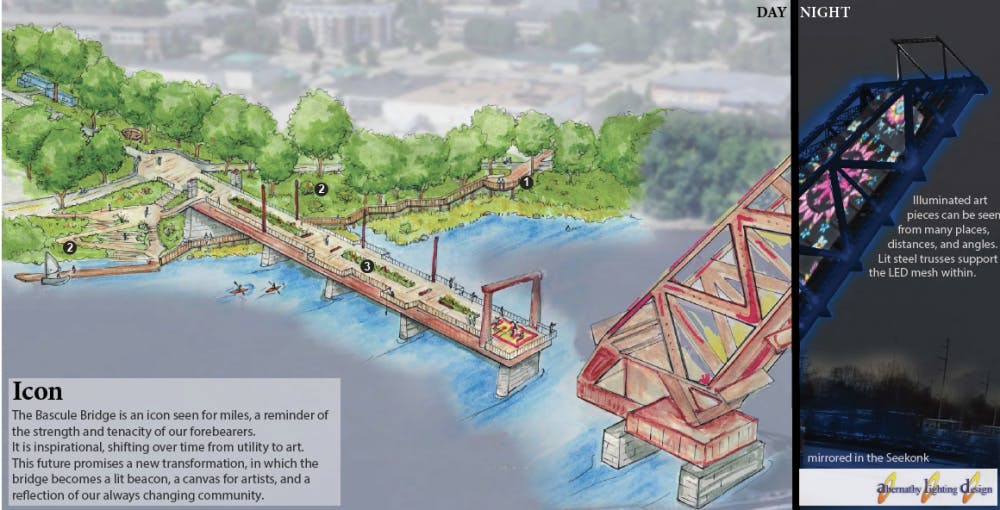On Providence’s East Side, a rusty drawbridge juts out of the Seekonk River and points to the sky. It is visible for miles and well-known among nearby residents. The Crook Point Bascule Bridge, built in 1908, formerly connected Fox Point to East Providence by railroad and was abandoned 45 years ago.
Two years ago, plans to demolish the bridge by the Rhode Island Department of Transportation were countered by the City of Providence, which announced efforts to save it. In October 2020, the Providence Redevelopment Agency issued an open call for designs to preserve and reuse the iconic landmark.
Horsley Witten Group and Jonathan Harris’s design, which proposes to construct new public riverfront areas and add interactive lights to the bridge, was announced the winner of the city’s contest, according to a June 2 announcement by the City.
In February, five finalists, chosen from nearly 80 applications that came from around the world, were awarded $1,000 and invited to create a second-round submission. A jury ultimately chose Horsley Witten Group, an engineering and environmental consulting firm based in Providence, which was awarded $10,000.
The winning design features “selective clearing” in the surrounding forest to allow for gathering spaces, Harris, associate professor of design at Johnson and Wales, told The Herald. The design also includes a light display that would replace the bridge’s railroad ties on the truss and can display information about weather and events.
The plan incorporates access to the Seekonk River area and features a commitment to environmentalism, including a plan to restore shoreline ecosystems. The group also identified an area in East Providence for affordable housing.
The choice not to reconnect both sides of the bridge to allow crossing from one side to the other set the Horsley Witten Group’s proposal apart from other finalist applications, Harris said.
“To get up to those heights would be significant infrastructure and difficult to keep up,” said Harris. It would also be far costlier.
Harris said the bridge represents “the industrial past (and) grittiness that makes Providence what it is.”
In regard to actualizing the concept, “given that this was only an ideas competition, there is not currently a cost estimate or timeline for this project,” Ben Smith, the city’s director of communications and media relations, wrote in an email to The Herald.
“Next steps include working with the Rhode Island Public Rail Corporation, a subsidiary of the Rhode Island Department of Transportation, to transfer ownership of the structure to the PRA and securing funding for further design and construction,” Smith wrote. RIPRC, which owns the bridge, was not involved in the design competition.
Before the design contest was announced, the Providence Preservation Society listed the bridge on its endangered properties list. Executive Director of PPS Brent Runyon said the organization wanted to call attention to the structure and ask whether the community “was interested more in preservation or in it being taken down.”
Although some supported demolition of the bridge, which has not yet been declared historic by any state or federal agency, many community members and the city expressed support for preservation, which prompted the open call to designers.
Runyon, who also served on the jury that chose the winning design, said “there were really positive things about all of them, (but) it was tough to come up with a winner” because no proposal “had all the things we wanted.” Key factors for the jury included safety, environmental and cultural issues, such as cultivating a welcoming space, he added.
The proposals could help “show that … Providence is a place that values its history, and is creative at coming up with ways to put it back into contemporary use,” Runyon said.

ADVERTISEMENT




